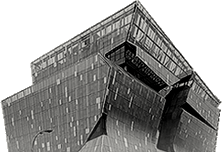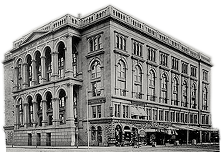Manifest: A Journal of American Architecture and Urbanism is an independent annual print publication edited by Anthony Acciavatti, Justin Fowler, and Dan Handel, which is supported in part by the Graham Foundation.
Founded as a means to initiate a critical conversation about the state of American architecture, its cities, and its hinterland, Manifest tackles head-on what others have abandoned. While Manifest intends to question the assumptions behind singular notions/constructions of America by tracing its origins and its global influence, the journal also strives to define the uniqueness of American forms of city-building and the distinct set of political parameters through which these forms are shaped.
Reception in the Arthur A. Houghton Jr. Gallery, 6pm-8pm
FREE AND OPEN TO THE PUBLIC
Manifest
'LOOKING INWARD'
Issue 1
Table of Contents:
'Looking Inward,' Anthony Acciavatti, Justin Fowler, and Dan Handel
'Wuthering Immensity,' John R. Stilgoe
'The Unfinished Bargain,' Michael Walzer
'The Enumerative Institution,' Robert Pietrusko
'Leveraged Urbanism: An Introduction to the Aesthetics of Finance,' Patrick Haughey
'Counting Chickens: The Landscape of Poultry in the American Broiler Belt,' Forbes Lipschitz
'Architectures of a Peaceful Revolution: Containing the Amazonian “Green Hell,”' Luis Castaneda
'The Cloud of Unknowing,' Dan Borelli
'Climate And Region: The Post-War American Architecture Of Victor And Aladar Olgyay,' Daniel A. Barber
'Consolidated Space in the Great Plains,' David Karle
'Deserta, by Design,' Pedro Ignacio Alonso
'Field Transmissions from West Texas,' GRNASFCK
'Marfa,' Florian Holzherr and Michael Maltzan
'Illustrating the American Community: Village and City in 1850s Residential Pattern Books,' Fred Esenwein
'Modern Dynamics 1: Chicago,' Adam Michaels and Shannon Harvey
'Usonia, Americanized: Gunnar Birkerts Goes Underground.,' James Graham
'The Work of Diagrams: From Factory to Hospital in Postwar America,' Joy Knoblauch
'A Theory of Disturbance (in Public and Private),' June 14
'Therapeutic Frontiers: The Tremaine Houses in Santa Barbara,' Volker M. Welter
'The Amplifier,' Robert Longo
'Thomas Pynchon's 115th Dream,' Enrique Ramirez





